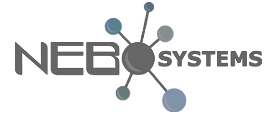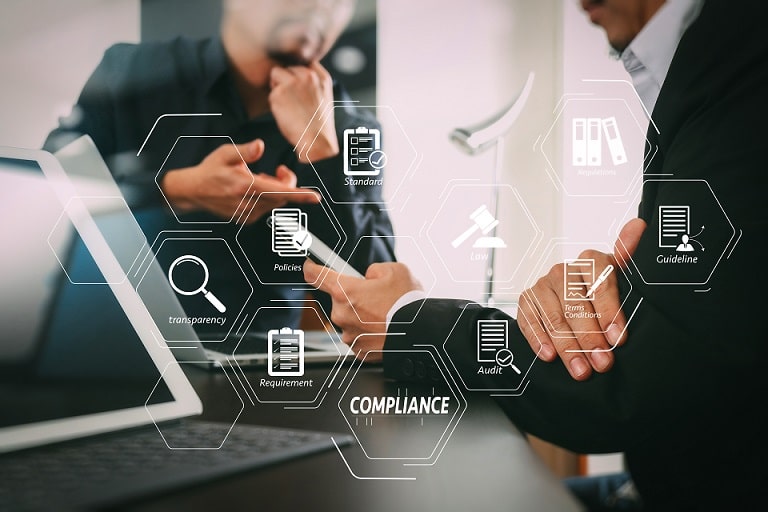NIS2 Directive Compliance Checklist for Companies
In response to the evolving cybersecurity threats, the European Union has introduced the Network & Information System (NIS2) Directive, setting a new standard for cybersecurity measures across member states. Understanding and complying with these requirements is crucial for organizations operating within the EU.
This checklist is designed to help companies understand whether they are affected by the NIS2 Directive (Directive (EU) 2022/2555) and need to comply with its cybersecurity requirements. Answering these questions will provide an initial assessment of your company’s obligations under the Directive.
Section 1: Company Size and Type
- Is your company considered a medium-sized enterprise or larger according to the EU definition? (More than 50 employees and an annual turnover or balance sheet exceeding €10 million)
- Yes
- No
- Does your company operate in the digital infrastructure, including as a DNS service provider, TLD name registry, or cloud computing service provider?
- Yes
- No
- Is your company a small enterprise or micro-enterprise that plays a key role in society, the economy, or within specific sectors or types of service? (Consider if your services are critical even if your company is small.)
- Yes
- No
Section 2: Sector-Specific Questions
- Is your company involved in any of the following sectors?
- Energy
- Transport
- Banking
- Financial Market Infrastructure
- Health sector
- Drinking water
- Digital infrastructure
- Public administration
- Space
- None of the above
- Does your company provide essential services within these sectors that, if disrupted, would have a significant impact on societal or economic activities?
- Yes
- No
Section 3: Operational Impact
- Does your company rely heavily on network and information systems for the provision of your services?
- Yes
- No
- In the event of a cybersecurity incident, could your company’s services be significantly disrupted, leading to substantial financial loss or societal impact?
- Yes
- No
Section 4: Exclusions
- Is your company’s primary activity related to national security, public security, defense, or law enforcement? (Note: If only marginally related, you might still fall under the Directive.)
- Yes
- No
- Is your company a public administration entity that predominantly carries out activities in the areas of national security, public security, defense, or law enforcement?
- Yes
- No
Section 5: Additional Considerations
- Has your company been previously identified as an operator of essential services under the NIS Directive or any national legislation related to cybersecurity?
- Yes
- No
- Is your company part of the supply chain for critical services in any of the sectors identified in question 4?
- Yes
- No
Conclusion
- Questions 1, 2, or 3 (Company Size and Type): If you answered “Yes” to any of these, your company falls within the scope of the NIS2 Directive due to its size, operation within digital infrastructure, or significant role despite being a small or microenterprise. Next Steps: Assess specific obligations under the NIS2 Directive and begin implementing necessary cybersecurity measures and reporting mechanisms.
- Question 4 (Sector Involvement): A “Yes” response indicates your company operates in a sector directly affected by the NIS2 Directive. Next Steps: Identify sector-specific cybersecurity requirements and engage with sector regulators or national cybersecurity authorities for guidance.
- Question 5 (Provision of Essential Services): If “Yes,” your services are crucial, making compliance with the NIS2 Directive imperative to ensure service continuity and security. Next Steps: Prioritize establishing a comprehensive risk management framework and incident response plan as per NIS2 requirements.
- Questions 6 and 7 (Operational Impact): Affirmative answers highlight your reliance on network and information systems and potential significant impacts from cybersecurity incidents. Next Steps: Strengthen your cybersecurity infrastructure, focusing on resilience and rapid incident response capabilities.
- Questions 8 and 9 (Exclusions): If you answered “Yes,” your company might be excluded due to its primary focus on national security or law enforcement. However, marginal involvement doesn’t grant exclusion. Next Steps: Clarify your exclusion status with legal experts and, if applicable, review your cybersecurity practices to ensure they’re adequate for your operational needs.
- Question 10 (Previous Identification as Essential Service Operator): A “Yes” answer suggests your company was already under obligations similar to those in the NIS2 Directive, which will likely continue or expand under the new directive. Next Steps: Update your cybersecurity and compliance strategies to align with NIS2 enhancements and consult with authorities for transitional requirements.
- Question 11 (Part of the Supply Chain for Critical Services): Answering “Yes” indicates your role in the supply chain could bring you under the NIS2 Directive’s purview, especially with its increased focus on supply chain security. Next Steps: Evaluate your cybersecurity practices in the context of supply chain integrity, collaborate with your partners to understand your shared responsibilities, and implement any necessary security and reporting enhancements.
Please note that this checklist provides a preliminary assessment, and the specific obligations under the NIS2 Directive may vary based on national transposition and interpretation by regulatory authorities.
Download the NIS2 Compliance Checklist
General Advice
Regardless of your answers, it’s advisable for all companies, especially those operating within or closely related to critical sectors, to adopt robust cybersecurity measures. The evolving cybersecurity landscape and the interconnected nature of digital services mean that comprehensive security practices are essential for resilience against cyber threats.
For companies potentially falling under the NIS2 Directive, consider the following steps:
- Review and Update Security Policies: Ensure that your cybersecurity policies are up-to-date and align with the best practices.
- Engage with Regulatory Authorities: Reach out to your national cybersecurity authority or sector-specific regulatory bodies to clarify your status under the NIS2 Directive and to obtain guidance on compliance.
- Consult Legal and Cybersecurity Experts: Seek advice from professionals specializing in cybersecurity law and technical security measures to ensure that your company meets all legal obligations and effectively mitigates cyber risks.
- Implement a Compliance Plan: Develop or update your cybersecurity compliance plan to address the requirements of the NIS2 Directive, focusing on risk management, incident reporting, supply chain security, and other relevant areas.
Remember, even if your company is not directly affected by the NIS2 Directive, adopting its principles can enhance your cybersecurity posture and potentially offer a competitive advantage by demonstrating a commitment to security to your clients and partners.
Ready to ensure your company is NIS2 compliant? Contact Nebosystems today for expert NIS2 compliance consulting. Our team is dedicated to helping you navigate these regulations, ensuring your cybersecurity measures are robust and compliant. Explore our NIS2 Compliance Cybersecurity Solutions for more information on how we can assist.
Reference: NIS2 Directive (Directive (EU) 2022/2555). EUR-Lex.


